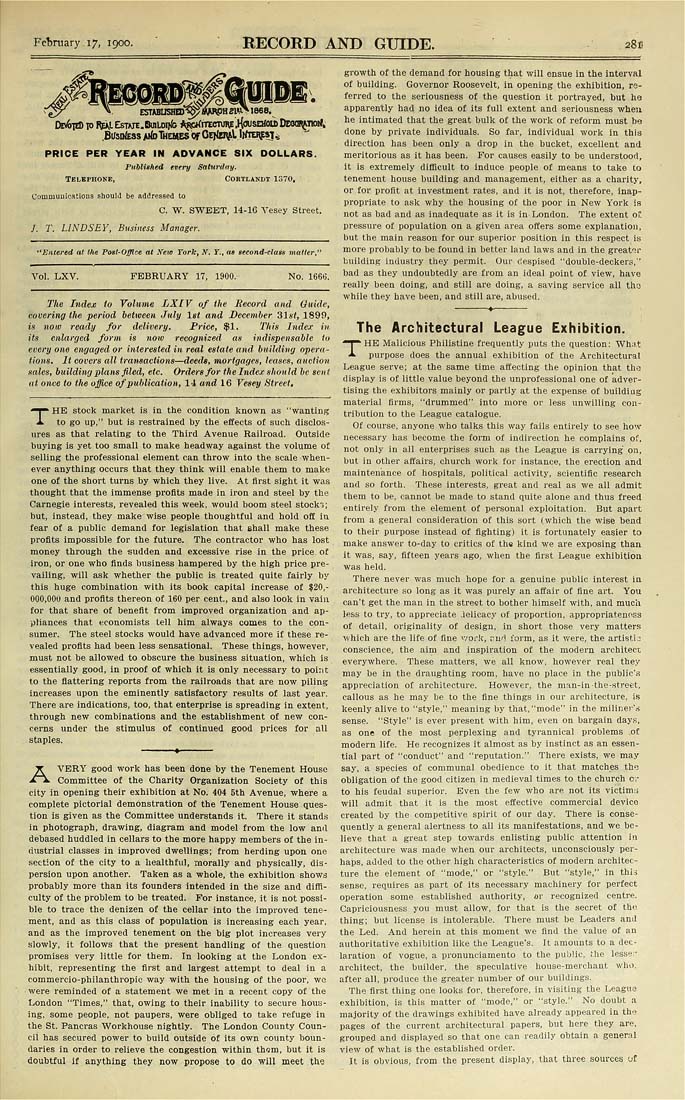
Text version:
Please note: this text may be incomplete. For more information about this OCR, view
About OCR text.
RECORD AND GUIDE. Devotes to RpjiEsTAjE.BuiLoiifc 5>^[wrfrreCTURE>{
7ork, rnd form, as it were, the artistic conscience, tbe aim and inspiration of the modern architect everywhere. These matters, we al! know, however real they may be in the draughting room, have no place in the public's appreciation of architecture. However, the man-in the-street. callous as he may be to tbe fine things in our architecture, is keenly alive to "style," meaning by that, "mode" in tbe miliner'.s sense. "Style" is ever present with hira, even on bargain days, as one of the most perplexing and tyrannical problems of modern life. He recognizes it almost as by instinct as an essen¬ tial part of "conduct" and "reputation." There exists, we may say, a species of communal obedience to it that matches tho obligation of the good citizen in medieval times to the church or to his feudal superior. Even the few who are not its victim;; will admit that it is tbe most effective commercial device created by the competitive spirit of our day. There is conse¬ quently a general alertness to al! its manifestations, and we be¬ lieve that a great step towards enlisting public attention in architecture was made when our architects, unconsciously per¬ haps, added to tlie other high characteristics of modern architec¬ ture tbe element of "mode," or "style." But "style," in this sense, requires as part ot its necessary machinery for perfect operation some established authority, ar recognized centre. Capriciousness you must allow, for that is the secret of th« thing; but license is intolerable. There must be Leaders and tbe Led. And herein at this moment we find tbe value of an authoritative exhibition like the League's, It amounts to a dec¬ laration of vogue, a pronunciamento to the public, the lesse;' architect, the builder, the speculative house-merchant who, after all, produce the greater number of our buildings. Tbe first thing one looks for, therefore, in visiting tbe League exhibition, is this matter of "mode," or "style." No doubt a majority of the drawings exhibited have already appeared in tiis pages of the current architectural papers, but here tbey are, grouped and displayed so that one can readily obtain a general view of what is tbe established order. It is obvious, from the present display, that three sources uf
